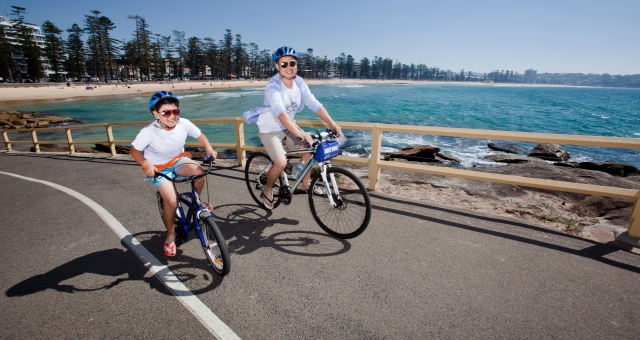The Expedia group has released 2016 full-year data revealing the latest trends in Australia’s top volume inbound markets which shows the USA leading the way.
Based on the demand generated by Expedia’s portfolio of travel brands including Hotels.com, AirAsiaGo Travelocity and Orbitz.com, the data sheds light on the travel patterns of visitors to Australia.
The United States leads, followed by New Zealand, the United Kingdom, Japan and Hong Kong. All five inbound markets experienced double digit growth, with a large majority booking 4-5 star hotels.
The US emerged as the most valuable market for Australian hoteliers with demand growing at 55% y-o-y. This surge in demand contributed to a record year for US travel to Australia with 2016 marking levels of growth that haven’t been experienced since the 2000 Olympics, according to Tourism Australia.
Although US travel was consistent throughout the entire year providing a steady flow of valuable demand to hoteliers, demand did spike slightly in November and December.
Expedia says this can be partly attributed to an array of public holidays – such as Veterans Day, Thanksgiving and Christmas – which provided Americans the ability to take advantage of calendar holidays to maximise their annual leave. Furthermore, US travellers paid the highest average daily rate, with more than 80% of them opting to stay in 4-5 star luxury hotels.
In terms of peak travel periods, as expected, the seasonal festivities at the end of the year dominated the holiday choices of all five markets, however New Zealand interestingly bucked the trend with its second-lowest month of Expedia group visitors in December. Not surprisingly, UK travellers perfectly timed the long journey down under to escape the Northern Hemisphere’s wintery conditions with visits for 2016 peaking in the height of the Aussie summer. International school holidays represented lucrative periods for Australian hoteliers with travel from Japan, Hong Kong and New Zealand spiking in and around their respective school holiday periods.
Drew Bowering, senior director of market management at Expedia group, said 2016 marked a strong year for Australia’s top inbound markets and, with economists labelling tourism as one of the key drivers to help fill the economic hole from the mining downturn, 2017 is shaping up to be a promising year for hoteliers.
“The Expedia group is first and foremost a technology company operating in the travel sector,” he said. “It analyses vast amounts of data from a diverse range of travellers from more than 75 countries, with more than 600 million site visits per month. It shares deep insights about traveller behaviour that can help its Australian hotel partners to optimise revenue by knowing when and where to target the right travellers at the right time with the right offer to help boost incremental demand.”
Key insights of top visitors to Australia:
UNITED STATES
-US travellers enjoyed the high life in 2016, with almost one quarter of them opting to stay at 5 star properties;
-Despite a shorter booking window (31 days) and length of stay (2 days) than other nationalities from the top inbound markets, US travellers represent the most valuable market with the highest average daily rate at a generous AUD$213; and
-Although Sydney was the top destination for US travellers (with over one third of them staying in hotels in Sydney), Newcastle and Launceston saw the highest y-o-y growth of 120% from 2015.
NEW ZEALAND
-Kiwis had the longest length of stay, leading the pack with an average 3 days at a hotel;
-With an average booking window in excess of one and a half months (48 days), it’s clear that New Zealand travellers like to be organised and secure their rooms well in advance;
-Almost three-quarters of all NZ hotel demand through Expedia group were in the 4-5 star range. In particular, New Zealanders led the 4-star market at almost two-thirds of total demand; and
-While top destinations included expected cities like Melbourne and Sydney, Townsville saw the highest growth in travellers from New Zealand, growing over 110%, followed by over 95% for the Gold Coast.
UNITED KINGDOM
-UK travellers planned their trips farthest in advance with an average booking window of over two months (64 days). Coupled with the lowest cancellation rates, the British customer is a key target to secure bookings far in advance;
-British travellers were also key package customers, booking the farthest out at almost three months (86 days) and staying the longest, averaging almost one week (6.6 days) per trip; and
-UK travellers represent the second most valuable market after the US, with an average daily rate of AUD$198.
JAPAN
-Australia saw the highest growth in Average Daily Rate from Japanese travellers, up by 5%, averaging AUD$193;
-Japan was one of the fastest-growing inbound markets for Australia, averaging 30% y-o-y; and
-Perth and Brisbane saw a healthy rise in Japanese visitors with a y-o-y increase of 60% and 40% respectively, becoming two of the fastest-growing destinations in Australia for travellers from Japan.
HONG KONG
-Together with the United States, Hong Kong generated the highest average growth with 1.5X increase in travellers visiting Australia;
-They tended to travel to Australia in and around school holidays however February and March were also strong travel periods due to Lunar New Year celebrations;
-Hong Kong travellers had a 1.5 month booking window (44 days), similar to that of Japanese visitors; and
-They also showed increased interest in the Gold Coast, Brisbane, and Hobart, with exceptionally high growth of almost 90%, over 70%, and nearly 70% respectively.


